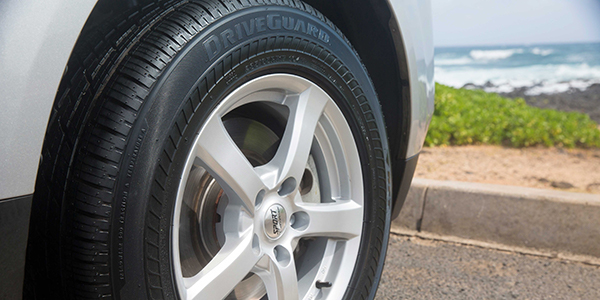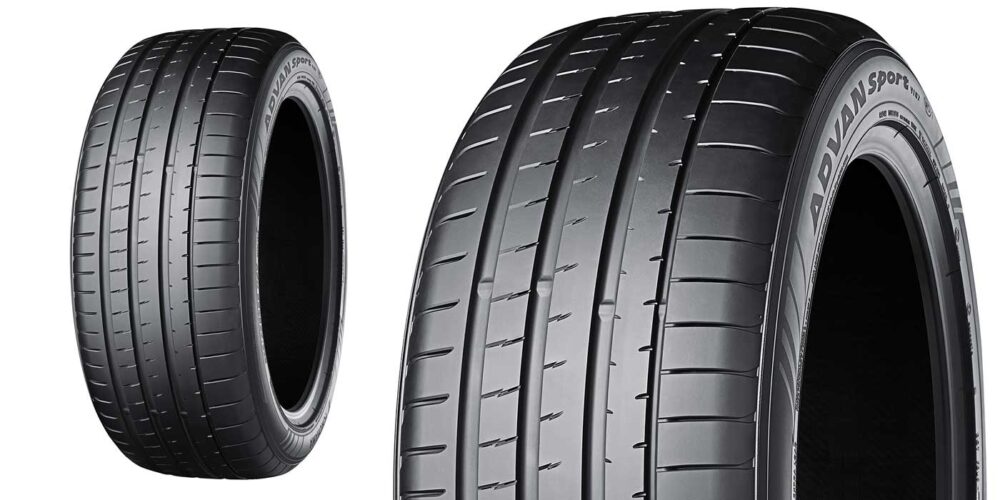Since the earliest days of the automotive industry, tire manufacturers have looked for ways to re-engineer the wheel to better meet the needs of the driving public. Run-flat technology was an early innovation, with the idea of a self-supporting run-flat tire making its first appearance in the mid-1930s. Driving habits, technology, regulations and demand have evolved dramatically since then, as has run-flat technology.
Engineering for a Smoother Ride
Tire manufacturers have spent billions of dollars in research and development to design better and safer tires for drivers. As part of this research, engineers have worked to improve the performance of, and understand the opportunities for, run-flat technology, its benefits and its importance to consumers and auto manufacturers. Innovations in polymer science have enabled manufacturers to build tires with extended mobility without compromising other important aspects of tire performance, including handling, ride comfort, and more.
The overall goal of run-flat technology is to engineer a tire that behaves as a premium touring tire when properly inflated, while also offering extended mobility in the event of a puncture or loss of pressure. While early generations of run-flat tires used to be marked by trade-offs including stiffer sidewalls and a firm ride, next-generation run-flat tires have solved for these challenges by reducing the minimum amount of materials needed to support the vehicle and utilizing highly specialized technology to address heat generation. The result is a lighter tire that feels more like a touring tire when inflated to the proper pressure.
More Than Nice to Have
Automakers have known for years that run-flat tires offer opportunities to meet important consumer and regulatory demands. BMW was among the first to fit run-flat tires on most of its future models as standard equipment. In doing so, the luxury vehicle manufacturer was able not only to offer convenience and confidence to drivers and free up valuable cabin space, but also reduce the overall weight of its vehicles by removing the heavy spare wheel and tire.
Reducing overall vehicle weight is one way automotive manufacturers have worked to address important and emerging sustainability-driven regulatory requirements, specifically updated Corporate Average Fuel Economy (CAFE) standards enacted by the U.S. government in 2012. The CAFE standards require automotive manufacturers to raise the average fuel efficiency of new cars and trucks to 54.5 miles per gallon by 2025. Run-flat technology has played a role by eliminating the need for a spare tire and contributing to improved fuel economy as a result. In fact, a recent AAA survey found that approximately one-third of 2015 model year vehicles sold did not come with a spare tire.
While some manufacturers are turning to run-flat tires as a solution, many are instead offering tire inflator kits as an alternative. Unfortunately for consumers, tire inflator kits are limited in the types of flats that they can repair. This increases the potential for added costs in the event of a problem, such as towing and tire replacement as well as the inconvenience and safety implications of being stranded on the side of the road.
Automotive manufacturers are not alone in their interest in run-flat technology. Bridgestone recently commissioned a survey that revealed that nearly 9 in 10 drivers (85%) say a flat tire would disrupt their day. Busy families don’t have time to be slowed down by the inconvenience of a flat tire. Safety-minded drivers want to know that they can avoid being stranded by the side of a busy roadside. Today’s run-flat technology addresses these drivers’ needs, providing peace of mind and confidence that they will be able to get to safety without disruption to their day.
What to Know
As next generation run-flat technology continues to evolve, tire manufacturers will need to educate dealers, distributors, and shop technicians on how this technology serves their customers, and how it is changing the performance and service of run-flat tires.
In order for a run-flat tire application to be effective, a vehicle must be equipped with a functioning Tire Pressure Monitoring System (TPMS). While TPMS has been mandatory on vehicles in the U.S. for nearly 10 years, a number of older vehicles are not equipped with this technology. Vehicles without a functioning TPMS system can be retrofitted with one to accommodate replacement touring tires that feature run-flat technology. To get the full benefits of a run-flat tire, TPMS must be installed and drivers should be told that it is not recommended to mix run-flat tires with conventional tires on the same vehicle.
The U.S. Tire Manufacturers Association (USTMA) also has very specific guidelines to determine how or if a run-flat tire should be repaired or replaced after a puncture. Though generally discouraged, in some cases these tires can be repaired. Technicians should always consult USTMA and manufacturer guidelines for clear direction on how to service run-flat tires.
The Future is Bright for Run-Flats
Automakers are equipping future vehicles with the technology, and consumers expect to have it all when it comes to their tires – they demand safety, ride comfort and convenience. Here at Bridgestone, we believe we will see increased growth in run-flat tire shipments in both the OE and replacement market in the future. With the anticipated growth of the run-flat technology, tire dealers need to educate their customers when it comes to safety and convenience, having conversations based the value of choosing a touring tire with an added run-flat benefit. TR
Contributing writer Robert Saul is the director of consumer product strategy with Bridgestone Americas Tire Operations.
Run-Flat Facts
50/50
Most manufacturers allow continued operation after a loss of inflation pressure for up to 50 miles at a maximum speed of 50 mph. Driving slower does not extend the range; the maximum is 50 miles at zero pressure at a speed not exceeding 50 mph.
Tire Types
There are two types of run-flat tires: self-supporting run-flat systems and support ring run-flat systems.
Self-supporting run-flat systems tend to be made from stiffer, tougher rubber, which can carry the weight of the vehicle under lower levels of tire pressure. To accomplish this, manufacturers typically attach rubber inserts next to or in between layers of heat-resistant cord in the sidewalls to help prevent breaking the reinforcing cords after the loss of air pressure. These tires also feature specialized beads that allow the tire to grip the rim even in the event of air loss.
Support ring run-flat tire systems combine unique wheels and tires. The tire is attached to a special rim that employs a ring, typically made of hard rubber that can support the vehicle’s weight in the event of air loss. If flat, the tire’s tread rests on the support ring attached to the wheel when the tire loses pressure. This puts most of the load on the wheel, rather than on the tire.
TPMS
Since the sidewalls don’t collapse when air pressure is lost, it can be very difficult for a driver to tell when a run-flat is deflated just by looking at it. So, run-flat tires must only be mounted on vehicles equipped with a functional tire pressure monitoring system (TPMS). Without TPMS, there is a very real risk that drivers might not know they are driving on an underinflated tire.
Replace vs. Repair
When a run-flat tire does suffer a puncture or loses air pressure, the consumer may not be able to get it repaired. At a minimum, the tires need to be carefully inspected to ensure they can be fixed. However, for safety reasons, most manufacturers strongly recommend against the repair of run-flat tires. They explain that it is not possible to establish the time and conditions under which a tire has been used with insufficient inflation pressure; therefore, a run-flat tire should always be changed and not repaired after a loss of pressure.
– Tire Review staff














